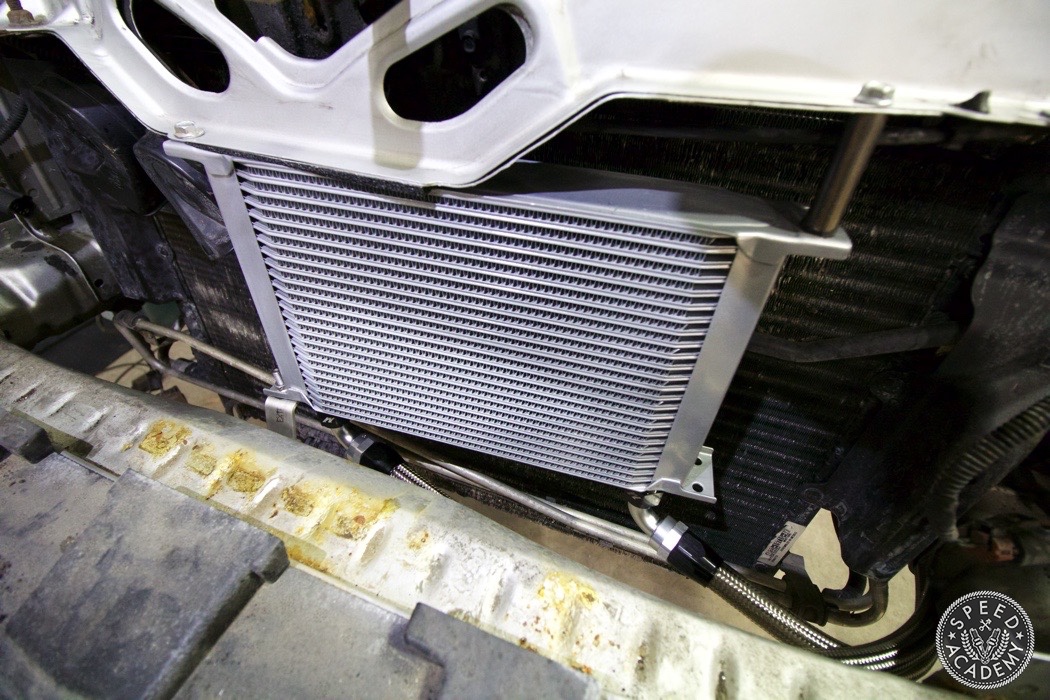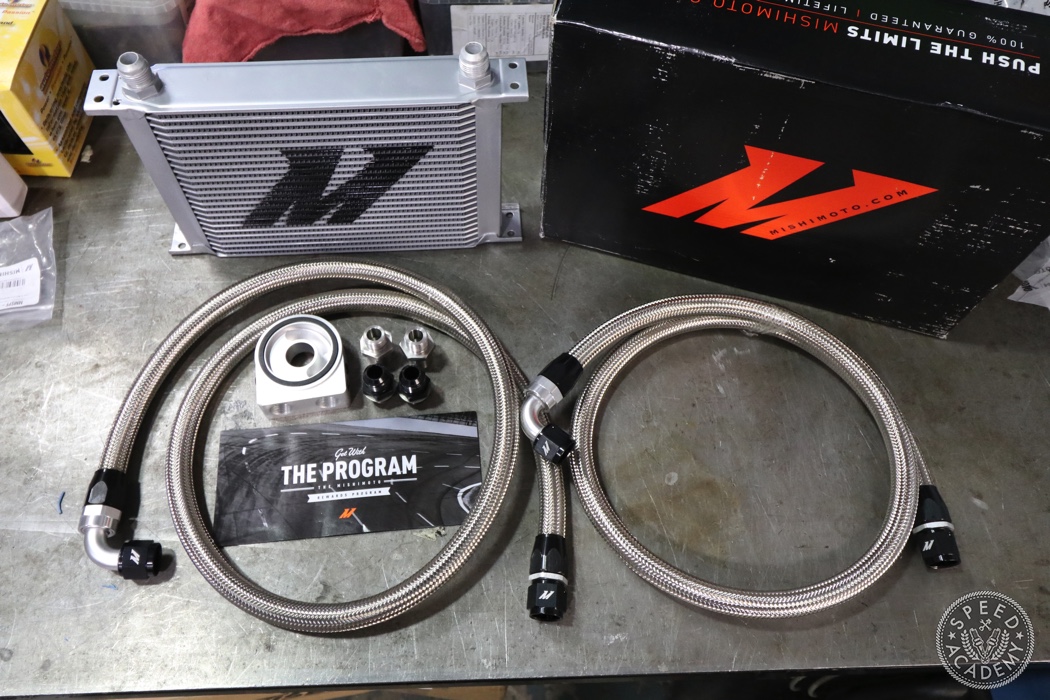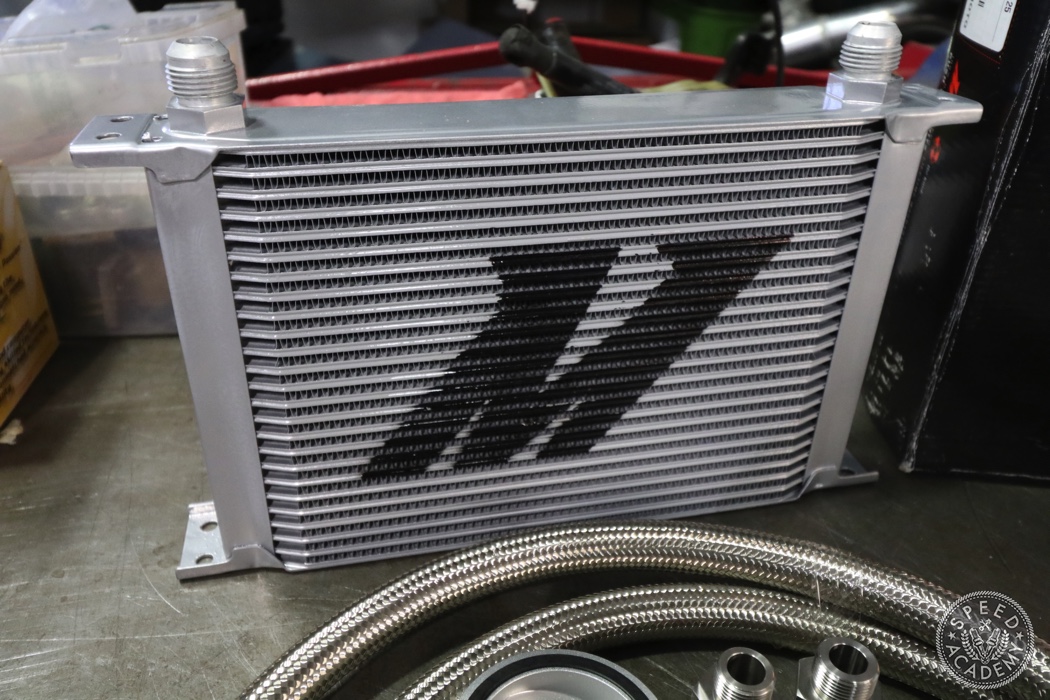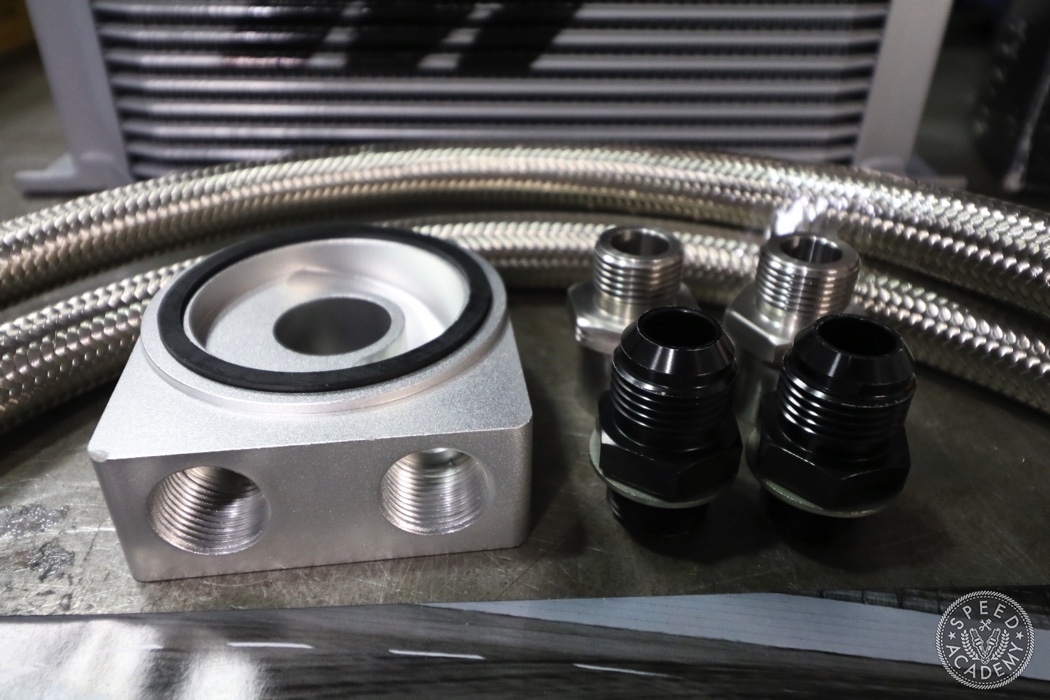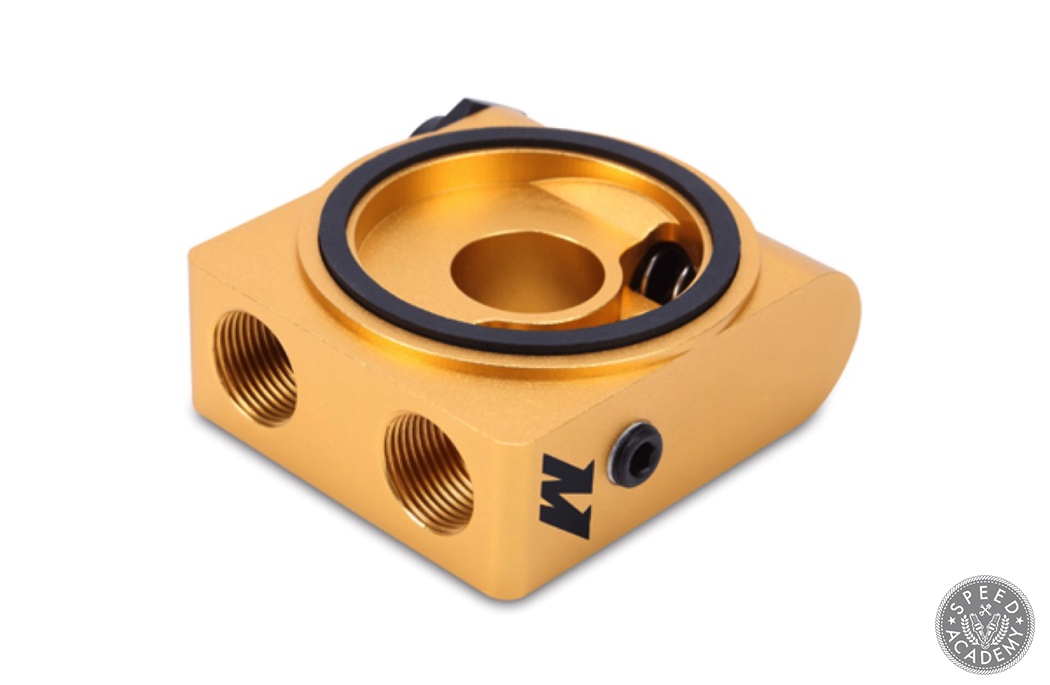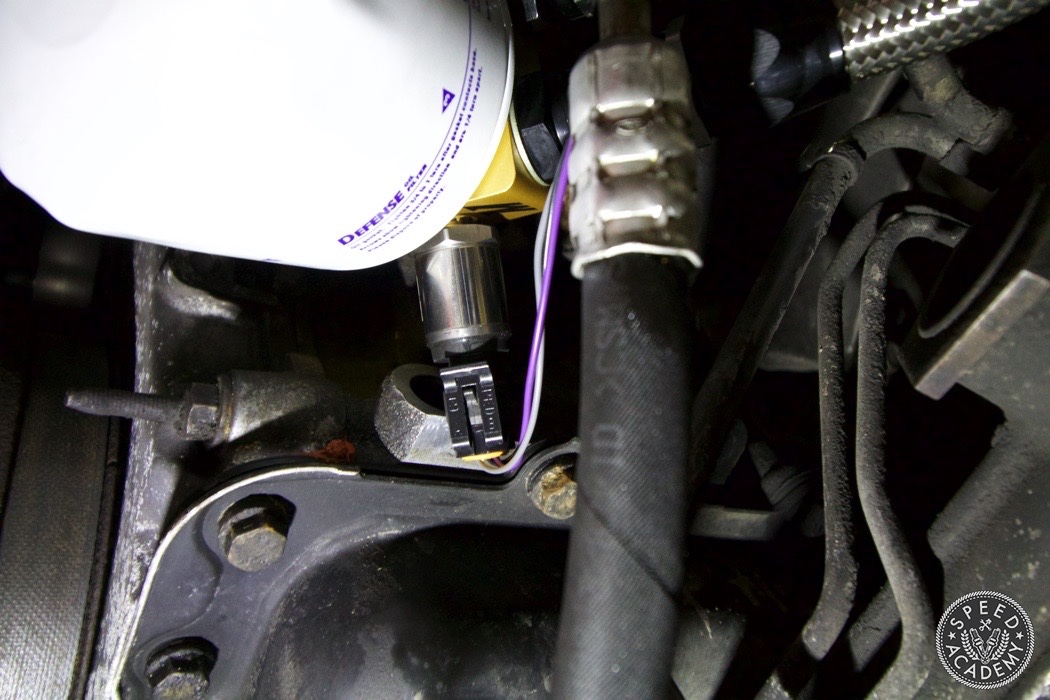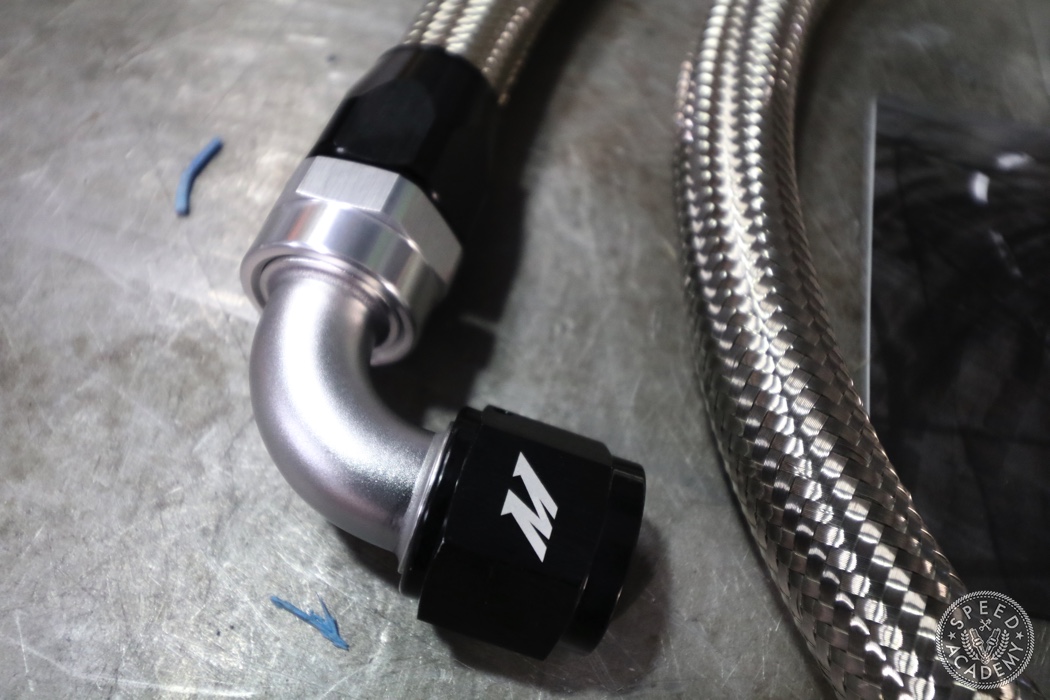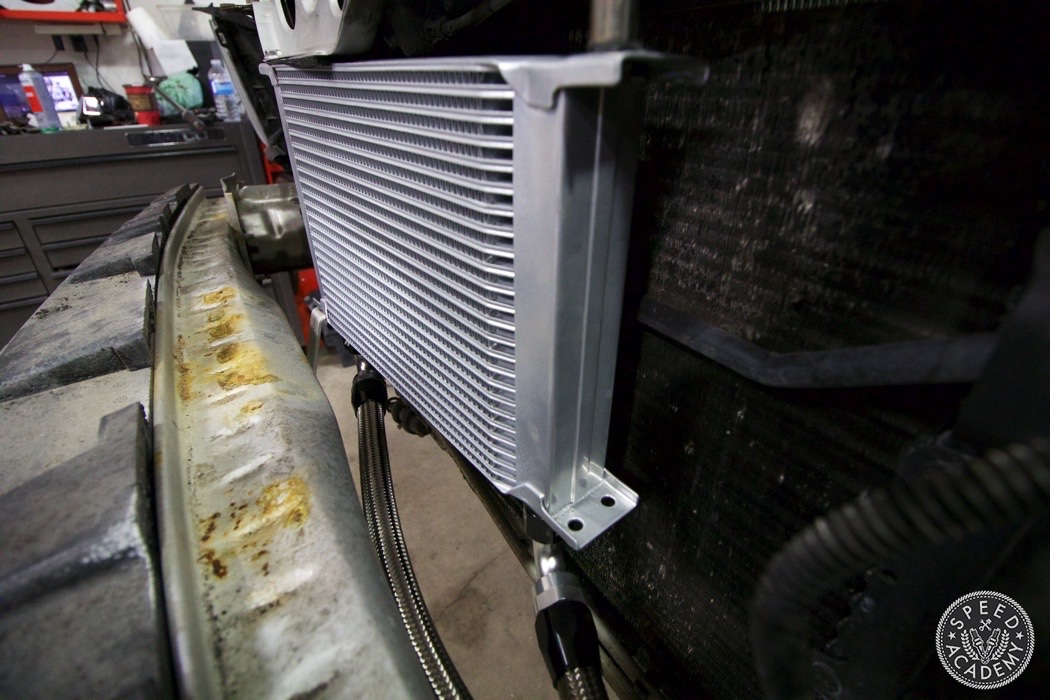Heat is the enemy of every engine, especially ones that get beat on at the race track. Sure, the 4.6-liter, 3-valve per cylinder Modular V8 in our Turn14 Distribution supported S197 Ford Mustang GT is a bit of a lazy lump, but we’re still running it hard enough at the track that after a few laps we can feel the heat soak starting to set in.
One of the most effective ways to keep your engine running strong and reliably at the race track is by adding an oil cooler. You can, of course, piece together your own oil cooler kit using the heat exchanger of your choice along with building some lines and sourcing an oil filter sandwich plate, or you can opt for more of a turnkey solution like this Mishimoto universal oil cooler kit.
At the heart of the kit is this 25-row oil cooler, which should be plenty big for the Mullet’s V8. As you can see it’s a stacked-plate cooler, which can withstand high fluid pressures and significantly reduce oil temperatures while exhibiting minimal pressure loss.
The kit also includes this anodized aluminum sandwich plate, which installs at the oil filter location and has two -10AN ports for the oil feel and return line. We didn’t pay close enough attention when ordered the kit, which comes standard with a M20-1.5 sandwich plate adapter that supports fitment for most makes and models including the Japanese cars we’re used to working on, but the Mustang needs a M22 (that’s the diamater of the central filter hole, in case you’re wondering).
No worries, though, with a quick call to Mishimoto we had a M22 thermostatic sandwich plate on its way, which has the added benefit of the thermostat limiting oil flow to the cooler until the engine is up to temp, making it ideal for a cooler climate like ours.
It also has threaded holes for two sensors, which we used to install the Auto Meter oil temp and oil pressure sensors for the AirDrive WiFi gauges we showed you in our previous update.
The universal kit also includes fully assembled oil lines with -10AN fittings and dowty seals for a secure and leak-free connection. The lines are long enough to fit just about any installation location in the front radiator opening, and as you’ll see in our install video at the bottom of this post, we opted to shorten one of the lines so that we didn’t have any excess length to deal with when routing them.
To mount the cooler, we simply found a spot we liked best in terms of ease of installation and access to fresh airflow.
